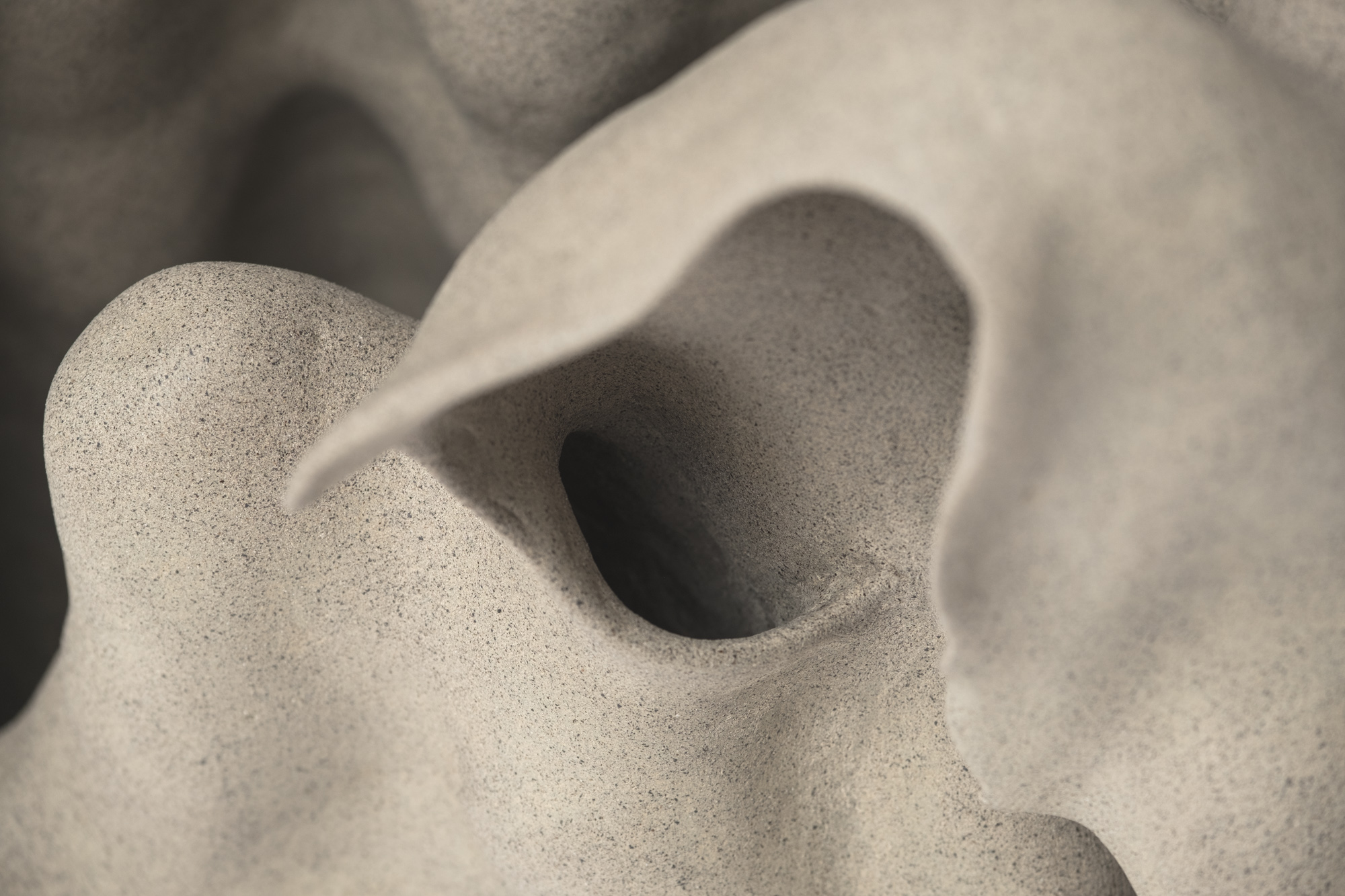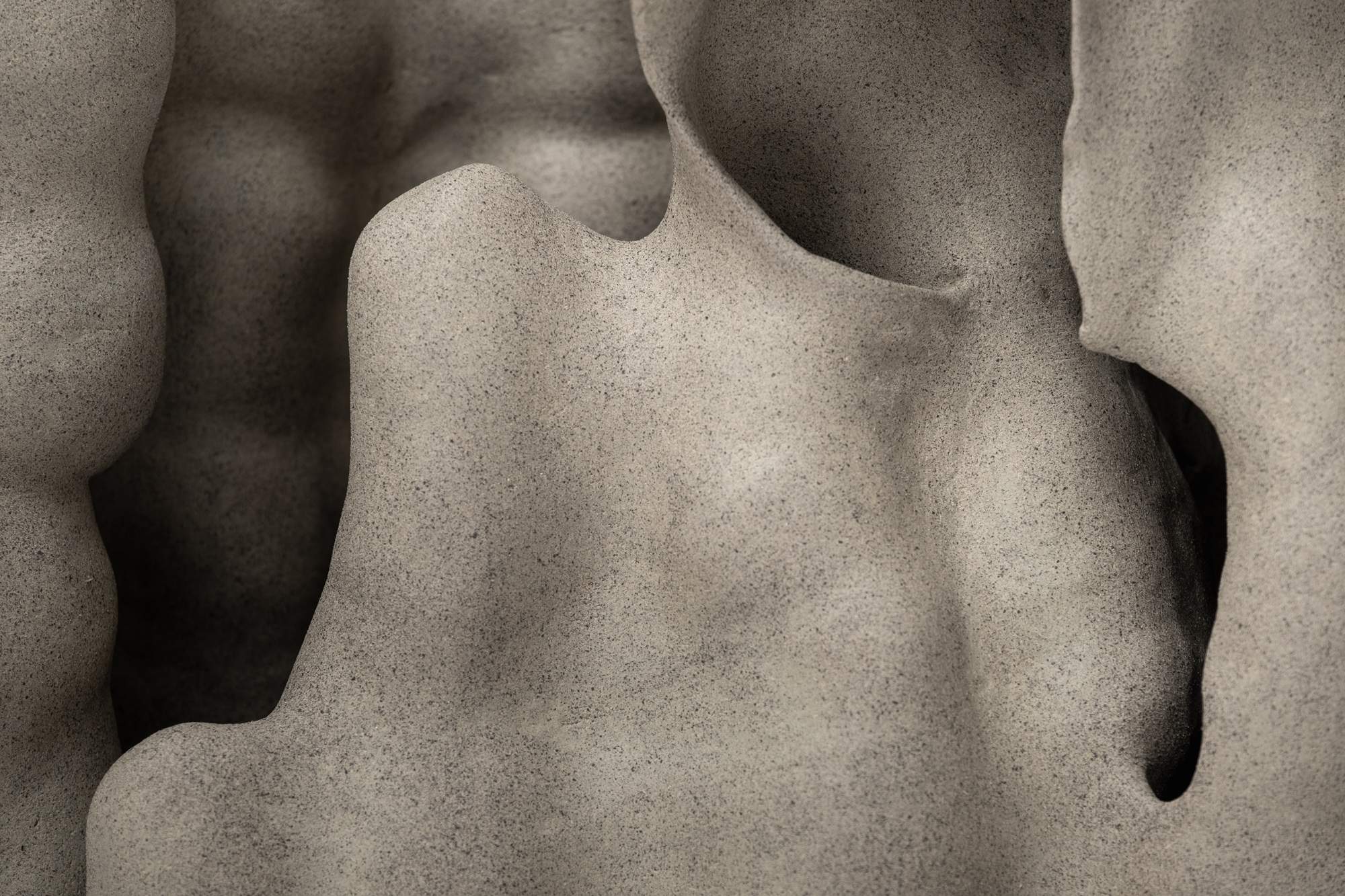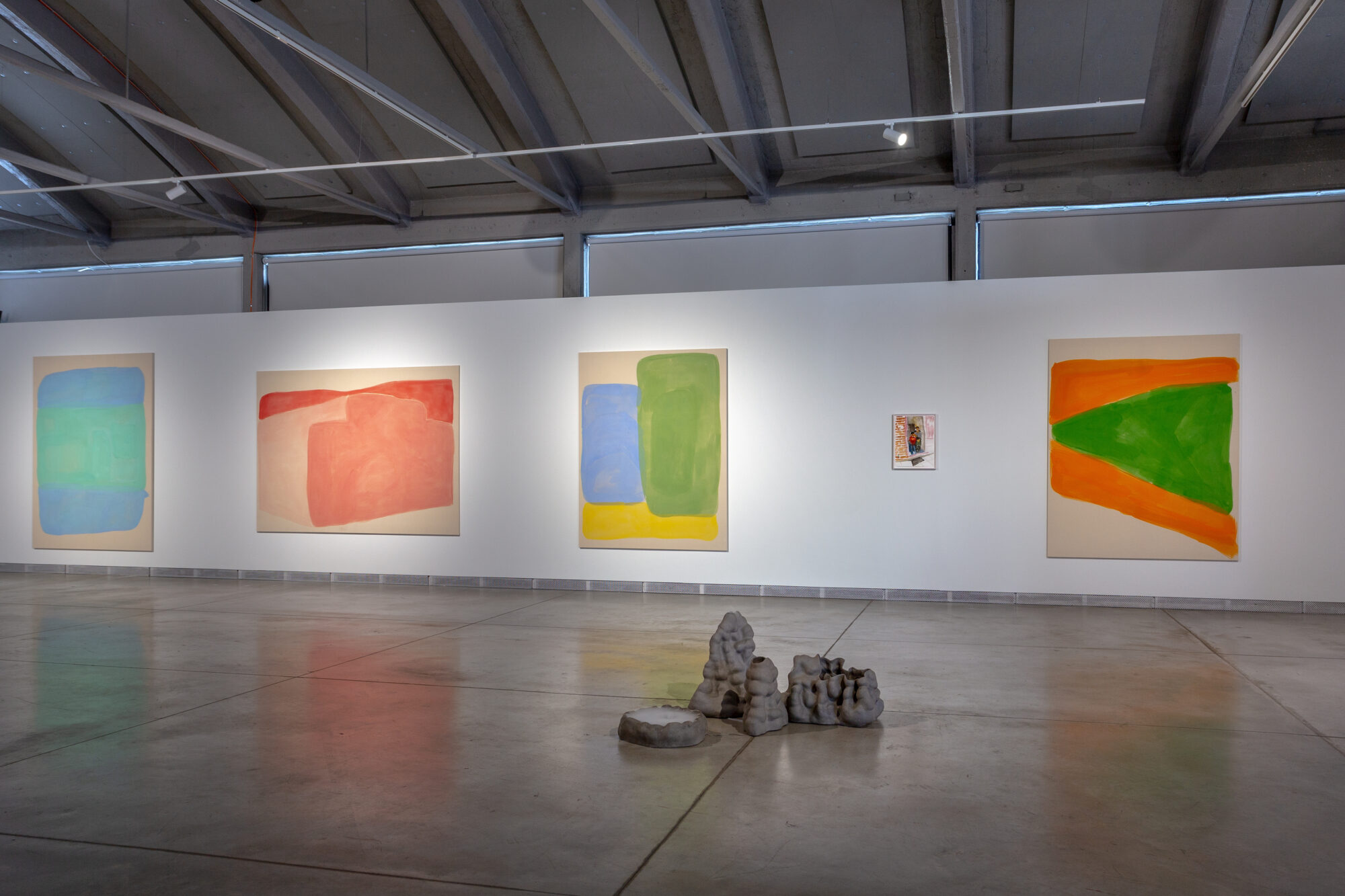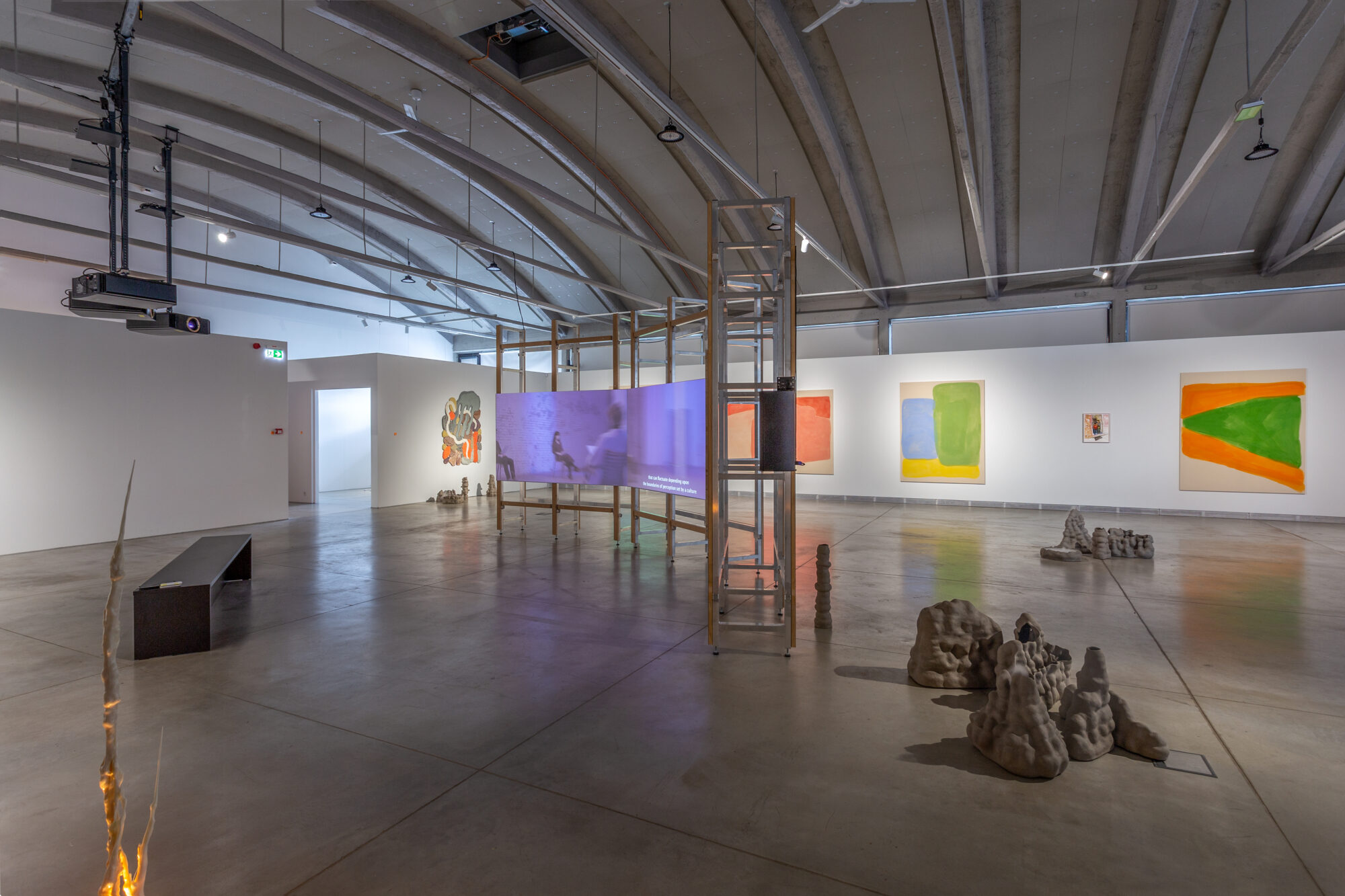Kai Centre, Tallinn
“Põld carefully chooses materials based on their agency and historical context. This installation, with its smoking and watery ceramic landscape, is based on Põld’s research conducted in former Soviet industrial areas in Estonia. Põld took inspiration from the Phosphorite War, an environmental campaign against the plans of the central government of the Soviet Union in Moscow for opening large phosphorite mines in the occupied Estonian territories in the late 1980s.
After the disaster at the Chernobyl nuclear power plant in the spring of 1986, environmental threats and problems began to be discussed in the USSR. The glasnost policy initiated by the leader of the USSR Mikhail Gorbachev provided an opportunity for these discussions.
The Phosphorite War movement was the culmination of local environmental protests that were additionally fueled by other problems such as the drainage of bogs and deforestation. Environmental protests also found their way into visual arts and literature, strengthening the political movement which later led to the restoration of Estonian independence in 1991.
As the fight for preservation of nature and against the climate crisis continues, Põld’s work draws powerful connections between the past and present and the destructiveness of both Soviet and neoliberal economies. Her invitingly mysterious and uncannily haunting ceramic sculptures leave us with the strange apprehension that where there’s smoke, there’s fire.” – Maria Helen Känd
Photos by Mari Volens and Albert Kerstna









